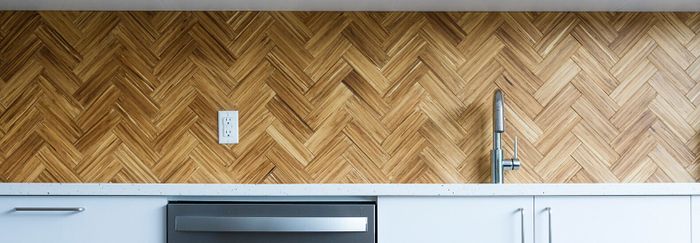World Economic Forum, 18 Jan 2021 Alex Thornton, Senior Writer, Formative Content
- ChopValue recycles old bamboo chopsticks into a stylish range of homewares and furniture.
- Founder Felix Böck came up with the idea when he was looking for sustainable ways of using waste wood.
- More than 32 million chopsticks have been saved from landfill and turned into new products.
Most people would look at an old pair of chopsticks and see nothing but trash. At a push, maybe something their kid could use in a school art project. Felix Böck saw desks, tables, chopping blocks, even dominos – and the basis of a thriving business that shows the circular economy in action.
Since 2016, Böck’s company ChopValue has been taking used bamboo chopsticks from restaurants in Canada and the US, and transforming them into attractive wooden tiles which are used in a range of furniture and homewares. A simple idea, born from a passionate aversion to waste.
“These chopsticks travel 6,000 miles to arrive on your dining table for 20 to 30 minutes,” Böck told the Guardian. “You can’t possibly feel good about throwing them out afterwards.”
Giving trash a new life
Böck, who has a background in wood engineering in Germany, was studying for a PhD in structural bamboo composites in Vancouver when inspiration struck as he was eating his favourite meal – sushi.
“I had an eye-opening moment when I connected the chopsticks I ate dinner with to the vast amount of under-utilized wood resources from demolished construction sites,” he explained in an interview with Forbes. “I had been trying to implement a regional program to tackle urban wood waste, but it fell on deaf ears – so I thought the humble little chopstick was a more relatable resource to show how you can build viable business opportunities from resource efficiency.”
Böck developed a way of cleaning the used chopsticks, and using heat, steam and pressure to turn them into versatile blocks. He began partnering with local restaurants, which quickly overcame any scepticism and appreciated the value in turning their trash into something useful.
“When you walk into a restaurant and you ask them to place a recycling bin for chopsticks, they still give you the exact same look as they gave me on day one,” Böck told the Guardian. “I think it’s because it’s one of these little things that we neglect. But the moment someone reminds us of that problem that’s right in front of us, it creates that immediate ‘aha!’ moment.”
One of their partners, the Canadian restaurant chain Pacific Poke, now has tables and even artwork made from their recycled chopsticks – a neat example of how the circular economy can be made to work in a way that benefits all involved.
Building reuse into the system
Since it began, ChopValue has given a new life to more than 30 million chopsticks that would otherwise have ended up in landfill, and processes about 350,000 a week in its Vancouver site alone. Böck envisages a network of franchises that can source chopsticks, process them, and sell the resulting products locally, creating jobs as well as using resources in the most sustainable way possible.
The potential for this kind of approach to materials is vast. Almost a third of the world’s population uses chopsticks every day, with China alone producing as many as 80 billion pairs of disposable chopsticks a year according to some estimates. And that’s just one product out of millions.
The World Economic Forum estimates that 92 billion tonnes of materials were extracted and processed globally in 2019, with only a small fraction reused. Apart from the huge environmental cost, it is bad business. Eliminating waste and making better use, and re-use, of materials and natural resources – the fundamentals of the circular economy – could yield as much as $4.5 trillion in economic benefits over the next decade.









